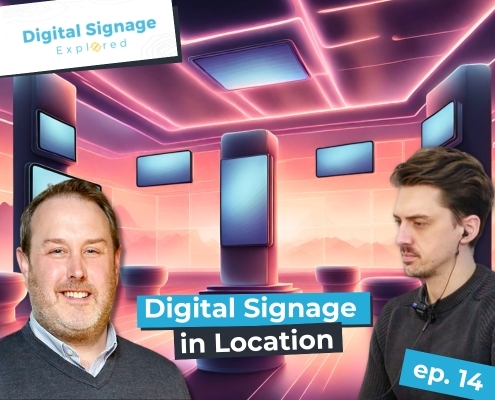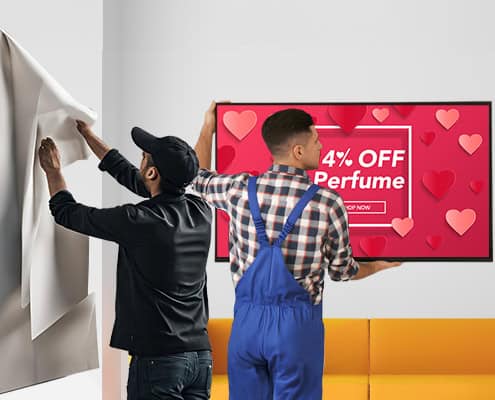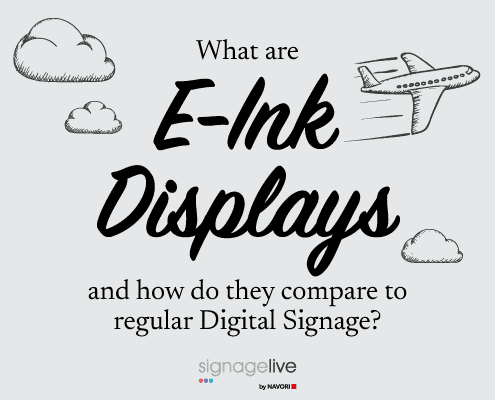You may have amazing content ideas, and the budget to bring them to life, but will they actually work for your Digital Signage project?! The truth is that, for Digital Signage, content is only king, if the context is right! This means that however brilliant your videos and HTML designs, they’re only going to underperform if you don’t display them in the right format, in the right place, and of course, in the right scenario. A good Digital Signage content strategy is only effective if it perfectly aligns with your goals, as well as the space, place and purpose of the site, where you intend to install it. We’ve teamed up with Peter Critchley, CEO of Europe’s leading audiovisual integrator, Trison, to share how this can be achieved. Here are our top tips.
Map the customer journey
Before hitting the Mac and starting your designs, it’s worth considering, how the content experience will help you achieve your business goals. What challenges or customer/viewer /employee needs are you trying to address? How can your content improve the brand or business experience, or help viewers make decisions? The more aligned the content is with your end goals, the more impactful it will be. The best content will always have a purpose.
Consider your placement decision
More specifically, the best content will always fit the purpose of the site in which it’s installed. It should be a natural extension of the location, and carefully use the space to enhance whatever experience you’re trying to amplify.
The relevance should immediately be clear, not just in terms of the content you display on-screen, but also in how it works with its surrounding environment, and ultimately how effectively it’s understood, as people move around the site. Peter Critchley, CEO of Trison, points to the Ikea rug size projection system as a great example of when the Digital Signage – and the content being displayed – resolve a business challenge, improve the end user experience, and add to the value of the installation area.
With this projection system, customers can select the size of rug, in which they’re interested, and see it digitally laid out across the store floor, as if in situ in the home with household furniture. This digital solution actively uses the floor space to resolve a customer challenge by helping interested buyers select the right rug size. In turn, this reduces the number of returns, improves the customer experience, and also keeps the store space tidy, while saving customers the trouble of having to physically unroll rugs to gage their sizes.
It’s a win-win solution, but only one example of the many things you can do with Digital Signage. You don’t have to be a luxury brand to create luxury customer experiences. You just need to personalise the viewer experience by factoring in what you’re trying to do for the people who come to your site, and how the environment can facilitate this.
Ticker installations – screens that display RSS feeds, are another example of how you can use Digital Signage content to change the way people perceive your brand. Made famous for their ability to provide finger-on-the-pulse, real-time stock market updates, RSS feeds can instantly update your corporate brand image. They enable you to deliver fast-paced information for a fast-moving business environment, where people only have a second to absorb information.
Factor in the architectural speed
Architectural speed will also be another important consideration, if you want your content to be seen properly. Whatever you display on-screen should move in perfect sync with your customers, as they navigate your site.
Remember, you are producing content for a dynamic environment. Think about the Digital Signage content you see as you move up and down the escalators in the underground. The on-screen messaging would be impossible to view, if it wasn’t moving at the same speed as you are on the escalator. Architectural speed is a factor you need to plan for in almost any environment, including corporate lobbies, where you should account for the speed at which people, and traffic move outside on any nearby road.
Think about your technology decisions
Displaying a standard 16:9 Digital Signage screen on a standard mount is, put simply, a standard experience. To stand out from the crowd, and deliver messaging with real impact, you can now do so much more, and often, within very cost-efficient budgets.
Varying the screen size, or even shape to better suit your space, and importantly, your goals can instantly deliver better engagement. You can now find screens in every shape from columns, squares, cubes and even circles, and in every screen size. If you want to convey a hyper-focused message, then small format screens are best, but if you want to wow the crowds with a topline message, then you might like to consider investing in a super-size display. The point is that if you want to grab attention, then you’ll need to change and add interest to the way you present your content.
Even if you want to start with something simple, there are a few tips and tricks to ensure that you can deliver a content experience worth seeing. This could just be by, for instance, making sure that you’re able to install your LED Digital Signage screens flat against the wall, so you can ensure the best viewing experience. Why not also try looking at whether you can recess the screens into the wall space for a neat and seamless flush installation?
Don’t forget the build, materials and installation
Sometimes, with all the excitement of the ideation phase, it can be easy to overlook how you’re going to manage the practical implementation and installation of your Digital Signage. However, the build, materials and installation requirements can make or break a project and should definitely be considered fundamental to the success of your content, and the viewing experience. Think about the mounting and maintenance of your screens – the finger holds you may need for manoeuvring, them, and if you require front, as well as rear access. Where will you place your media players and are you going to use a distribution signal? For outdoor Digital Signage, you’ll need to consider the steel structures, where the loadings are and the wind shear that’s likely.
Take the time to allow your resellers and integrators to help design mini mock-ups of your Digital Signage, so you can test and perfect your Digital Signage plan. This can now even be done, using 3D technology and VR headsets. This will help digitally put you in the place and experience that you’re trying to create for viewers. It’s the best way to ensure that you deliver the goals you want to achieve.
For more tips on how to create the right Digital Signage for your site, tune in to our latest Digital Signage Explored episode with Digital Signage expert and special guest, Peter Critchley from Trison.





You must be logged in to post a comment.